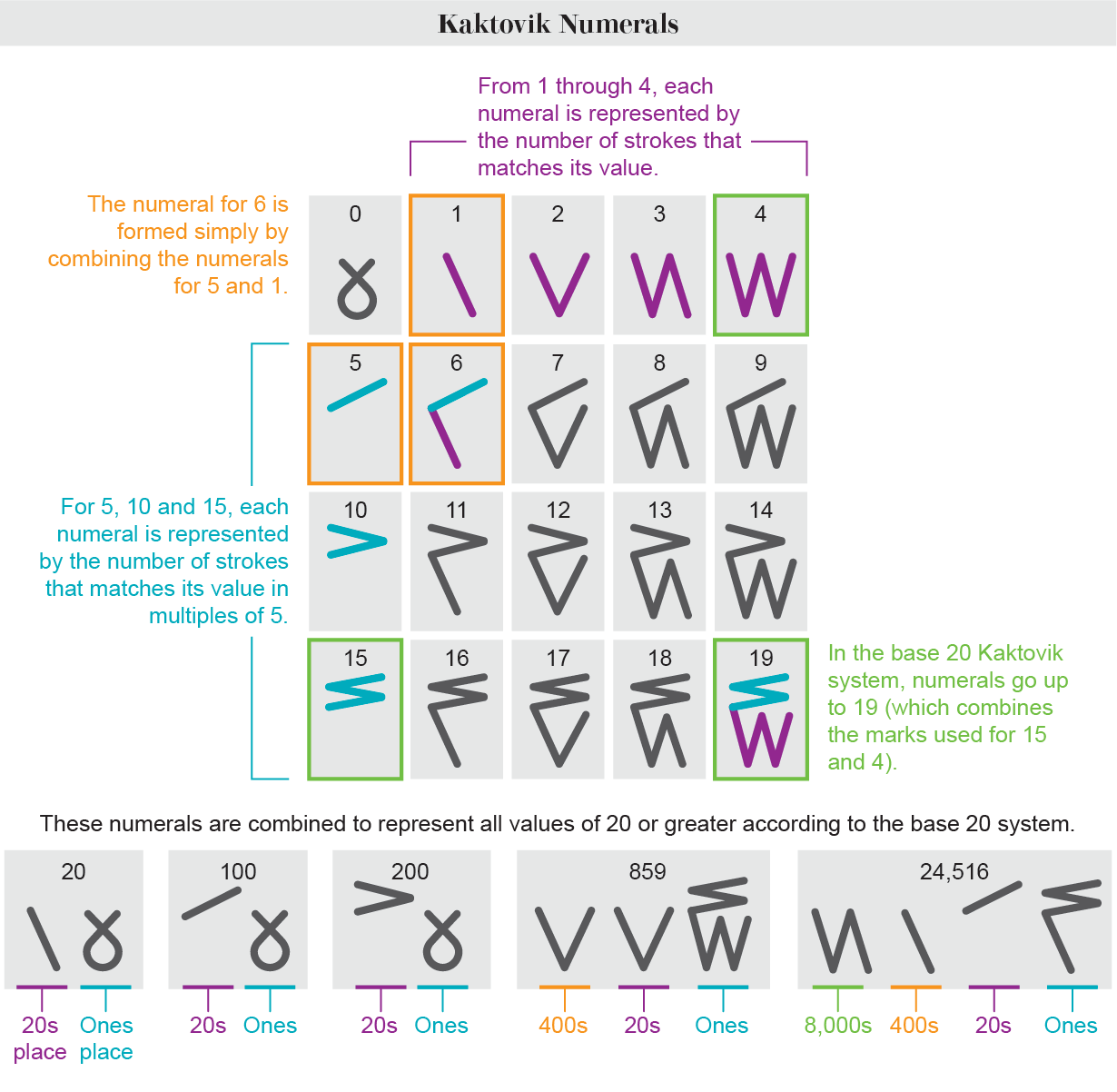You know about Roman numerals and Arabic numerals, but there have been other civilizations through human history with their own mathematical systems. For example, have you ever heard of Kaktovik numerals?
If you are living off the land in a remote part of the world, you don’t need elaborate mathematics. A quick, visual arithmetic will do just fine. So about 30 years ago, Inuit middle schoolers in the village of Kaktovik Alaska and their teacher invented a new number system based on traditional Inuit oral counting.
The Inuit language Iñupiaq uses an oral counting system based on the human body. Quantities are grouped by five, 10, and 15 and then in sets of 20. The system “is really the count of your hands and the count of your toes,” says Nuluqutaaq Maggie Pollock, who taught with the Kaktovik numerals in the city of Utqiagvik. For example, tallimat—the Iñupiaq word for 5—comes from the word for arm: taliq. “In your one arm, you have tallimat fingers,” Pollock explains. Iñuiññaq, the word for 20, represents a whole person. In Inuit tradition, the body serves as a mathematical multitool. “When my mother made me a parka, she used her thumb and her middle finger to measure how many times she would be able to cut the material,” Pollock says. “Before yardsticks or rulers, [Iñupiat people] used their hands and fingers to calculate or measure.”

Credit: Amanda Montañez; Source: “Unicode Request for Kaktovik Numerals,” by Eduardo Marín Silva and Catherine Strand. Submitted to Unicode Technical Committee Document Registry March 16, 2021 (reference)
You probably have read how Native American languages have been suppressed for most of our history, and Iñupiaq was no exception. “We had a tutor from the village who would help us blend into the white man’s world,” Pollock says. “But when my father went to school, if he spoke the language, they would slap his hands. It was torture for them.” By the 1990s the native counting system was in danger of being forgotten forever.
And yet, this recent version has quickly spread throughout the region. In fact, thanks to the support of Silicon Valley, the system will soon be available on smartphones and computers. Uniquely adapted for the region, Kaktovik numerals will be another tool for modern technology.
For a more detailed explanation, see “A Number System Invented by Inuit Schoolchildren Will Make Its Silicon Valley Debut” by Amory Tillinghast-Raby at https://www.scientificamerican.com/article/a-number-system-invented-by-inuit-schoolchildren-will-make-its-silicon-valley-debut/.
